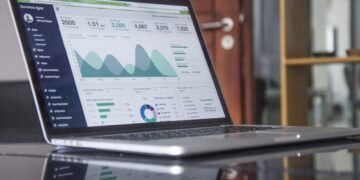In an era where technology advances at lightning speed, eye-ta is emerging as a pivotal force driving innovation and efficiency across various sectors. But what exactly is eye-ta, and why is it becoming so crucial in today’s world? This blog post dives into the essence of eye-ta, its evolution, and its impact on multiple industries while providing valuable insights and practical tips for leveraging this technology effectively.
Understanding Eye-ta and Its Significance
Eye-ta, short for “eye-tracking analytics technology,” refers to the use of sensors and cameras to measure and analyze where and how long a person looks at certain areas on a screen or in a physical space. This data provides valuable insights into user behavior, preferences, and engagement, making it a powerful tool for businesses and researchers alike.
Eye-ta is significant because it allows companies to create more intuitive and user-friendly products. By understanding where users focus their attention, businesses can optimize their designs, improve user experiences, and increase customer satisfaction. In today’s competitive market, leveraging eye-ta can give companies a crucial edge.
The Evolution of Eye-ta
Eye-ta has come a long way since its inception. Initially, eye-tracking technology was bulky, expensive, and primarily used in academic and research settings. However, advancements in sensor technology, computing power, and machine learning have made eye-ta more accessible and affordable.
Today, eye-ta devices are smaller, more accurate, and can be integrated into everyday consumer electronics like smartphones, tablets, and virtual reality headsets. This evolution has expanded the applications of eye-ta, making it a valuable tool across various industries.
Eye-ta in Different Industries
Healthcare
In the healthcare sector, eye-ta is revolutionizing diagnostics and treatment. For instance, it can be used to detect early signs of neurological disorders by analyzing eye movement patterns. Additionally, eye-ta enhances surgical training by providing real-time feedback to surgeons, improving precision and outcomes.
Marketing and Advertising
Marketers and advertisers use eye-ta to understand consumer behavior better. By tracking where users look in advertisements, companies can optimize their marketing campaigns, placing key messages and visuals where they are most likely to be seen. This leads to higher engagement and conversion rates.
Education
In education, eye-ta helps create more effective learning materials. By analyzing how students interact with educational content, educators can identify areas where students struggle and adjust their teaching methods accordingly. This personalized approach enhances learning outcomes.
The Future of Eye-ta
The future of eye-ta is bright, with several exciting trends and developments on the horizon. One major trend is the integration of eye-ta with artificial intelligence (AI). AI algorithms can process eye-tracking data in real time, providing deeper insights and enabling more sophisticated applications.
Another trend is the use of eye-ta in augmented reality (AR) and virtual reality (VR). Eye-ta can enhance these immersive experiences by enabling more natural and intuitive interactions. For example, in VR gaming, eye-ta can be used to target enemies just by looking at them, creating a more engaging experience.
Practical Applications of Eye-ta
Individuals and businesses can leverage eye-ta in various ways to improve their operations and achieve their goals. Here are some practical applications:
Website Optimization
Businesses can use eye-ta to analyze how users interact with their websites. By understanding where users focus their attention, companies can optimize their web design, ensuring important information is easily accessible and improving the overall user experience.
Product Design
Eye-ta can be used in product design to create more intuitive interfaces. By analyzing how users interact with prototypes, designers can make data-driven decisions to enhance usability and functionality.
Training and Development
In corporate training, eye-ta can provide valuable feedback to employees. For example, in customer service training, eye-ta can help identify areas where employees need to improve their communication skills, leading to better customer interactions.
Challenges and Opportunities of Eye-ta
While eye-ta offers numerous benefits, it also comes with challenges. One significant challenge is privacy concerns. Collecting and analyzing eye-tracking data can raise ethical questions about user consent and data security. Businesses must ensure they handle eye-ta data responsibly and transparently.
However, these challenges also present opportunities. Companies that prioritize ethical practices and transparent communication can build trust with their customers. Additionally, advancements in data encryption and anonymization techniques can help address privacy concerns.
Best Practices for Optimizing Eye-ta
To get the most out of eye-ta, businesses should follow these best practices:
Invest in Quality Equipment
High-quality eye-tracking equipment ensures accurate data collection, leading to more reliable insights. Invest in reputable devices and software to maximize the effectiveness of your eye-ta initiatives.
Train Your Team
Ensure your team understands how to use eye-ta technology effectively. Provide training on data interpretation and analysis to extract meaningful insights from eye-tracking data.
Prioritize User Privacy
Respect user privacy by obtaining informed consent and anonymizing data whenever possible. Communicate transparently with users about how their data will be used and stored.
Conclusion
Eye-ta is transforming industries by providing valuable insights into user behavior and preferences. From healthcare and marketing to education and product design, eye-ta offers numerous applications that can enhance efficiency, improve user experiences, and drive innovation.






















